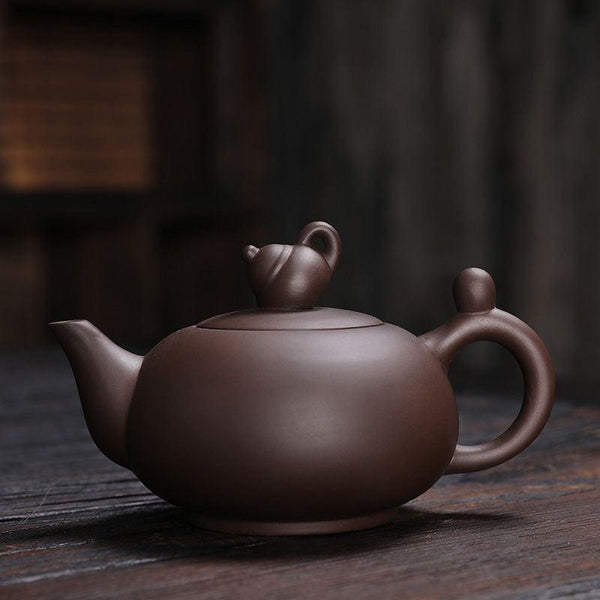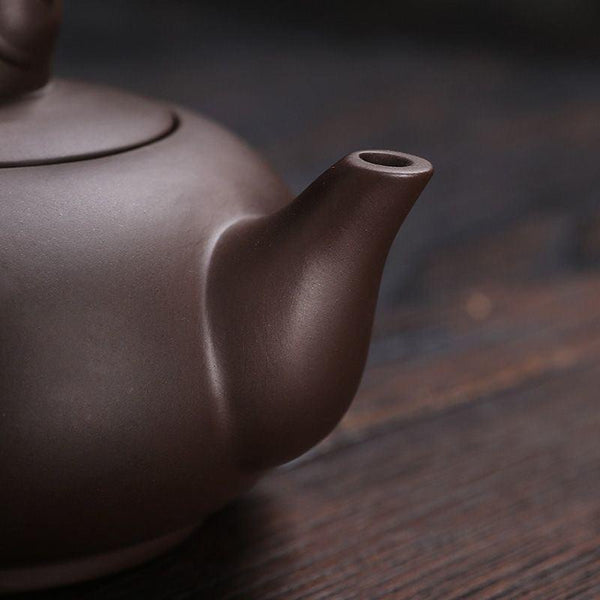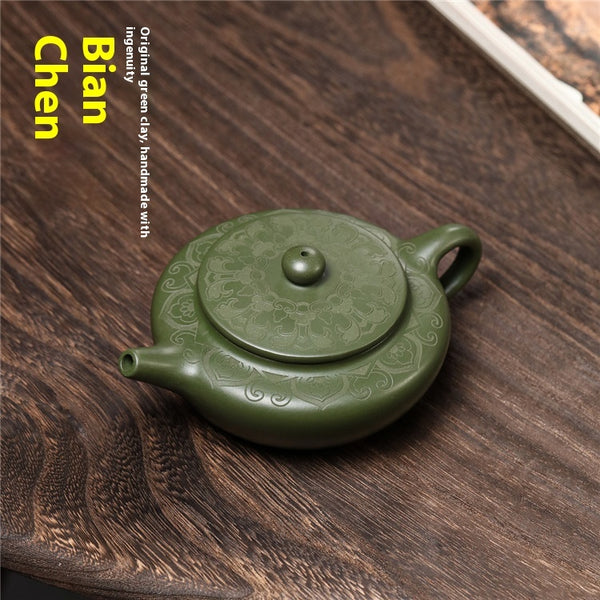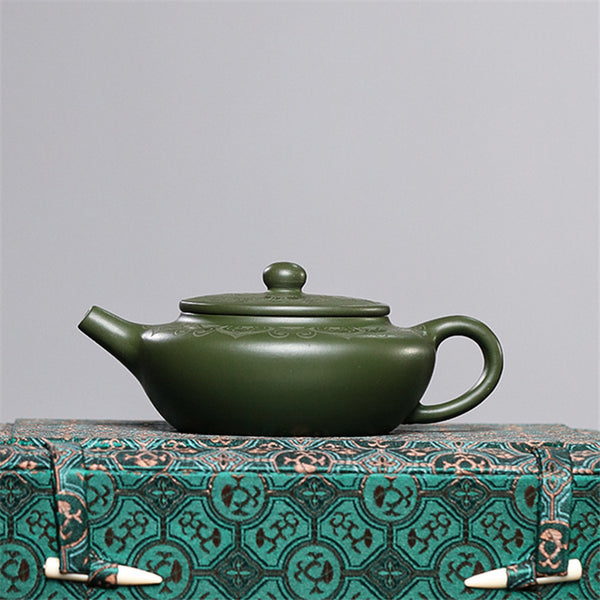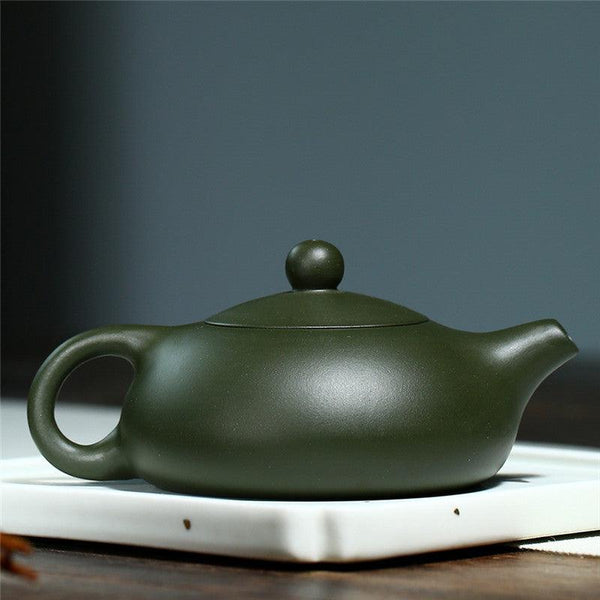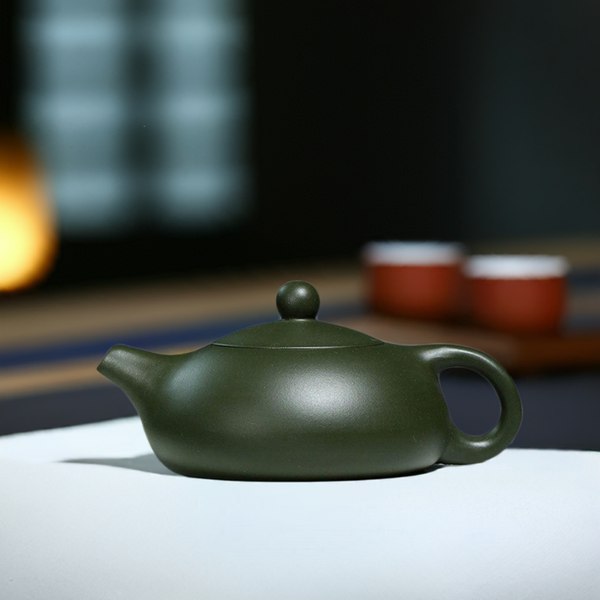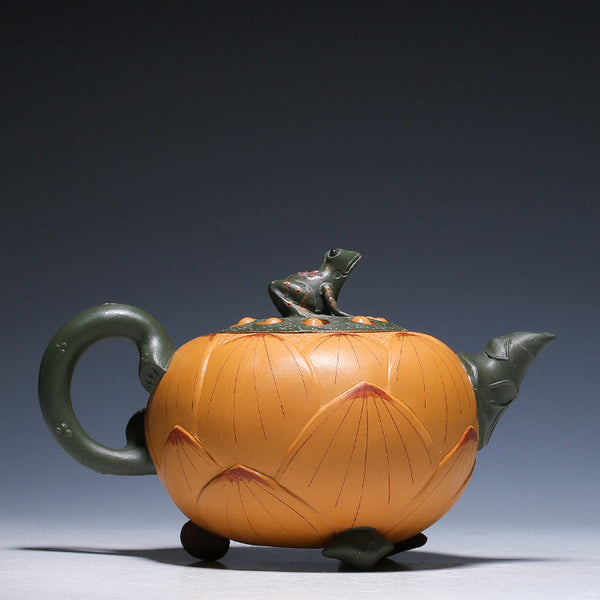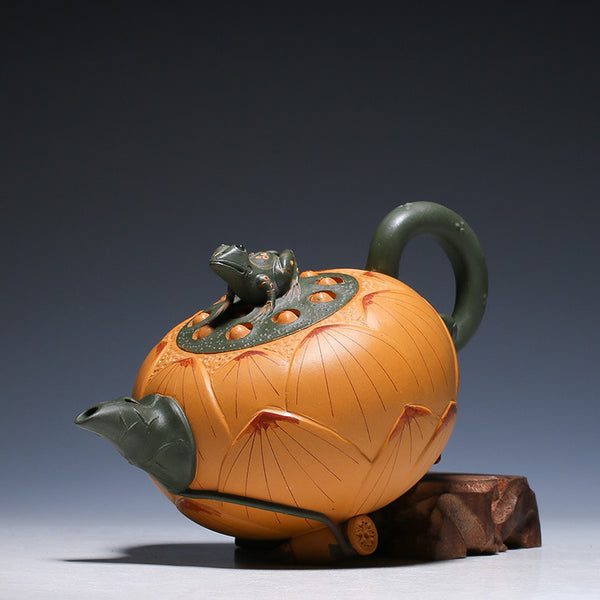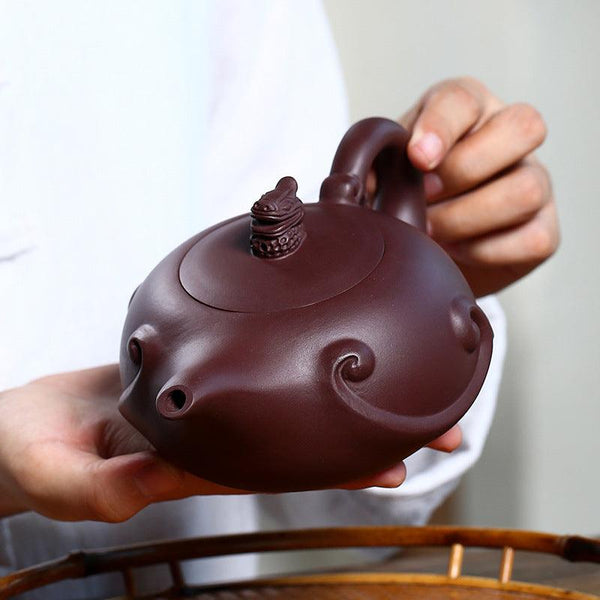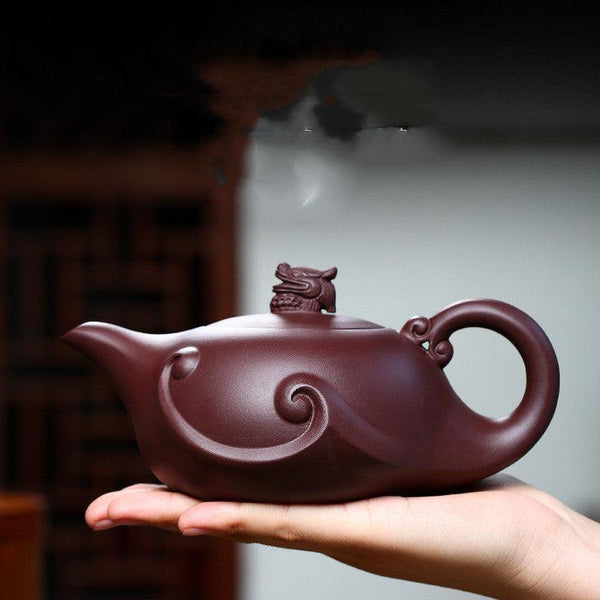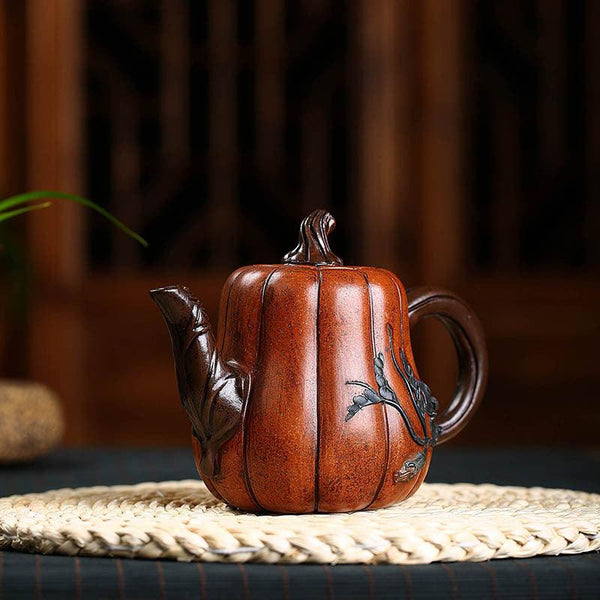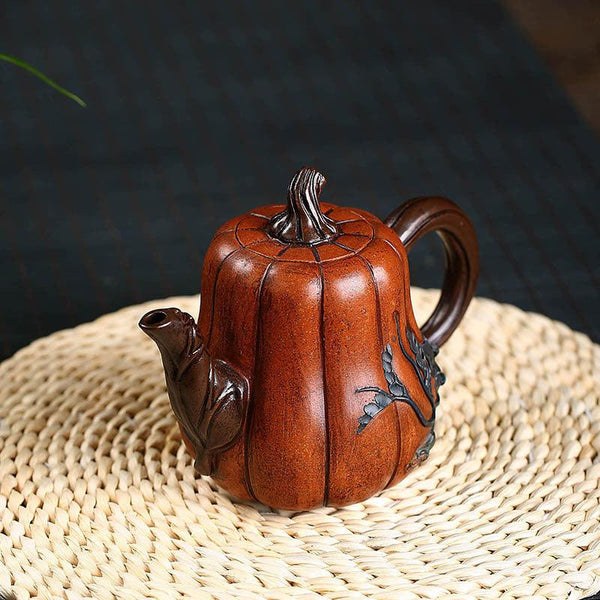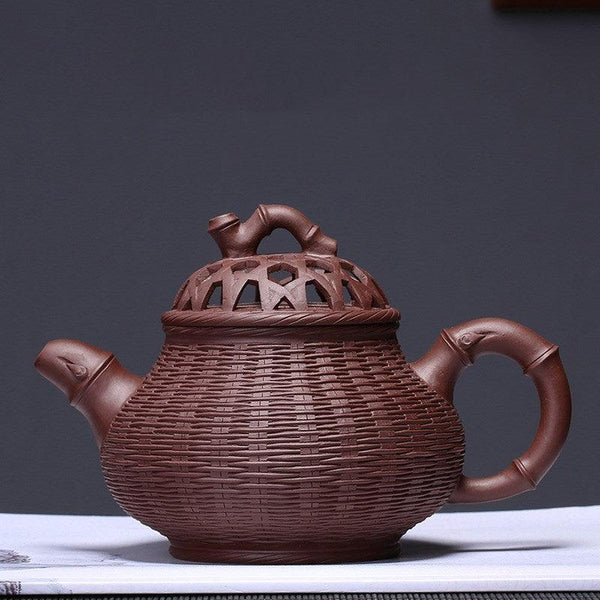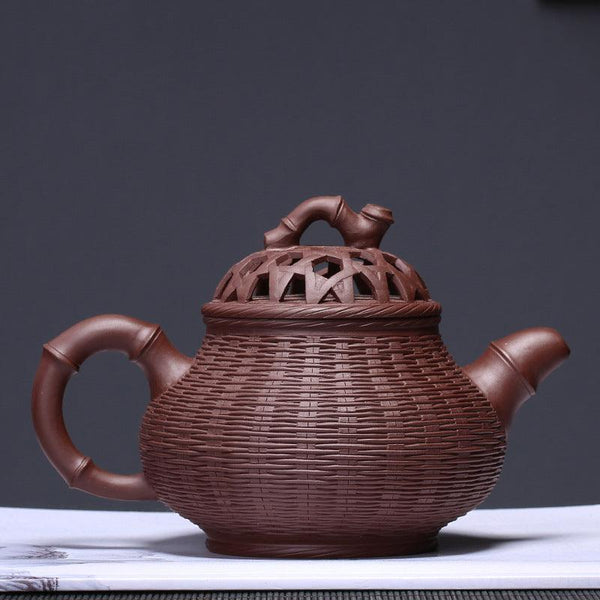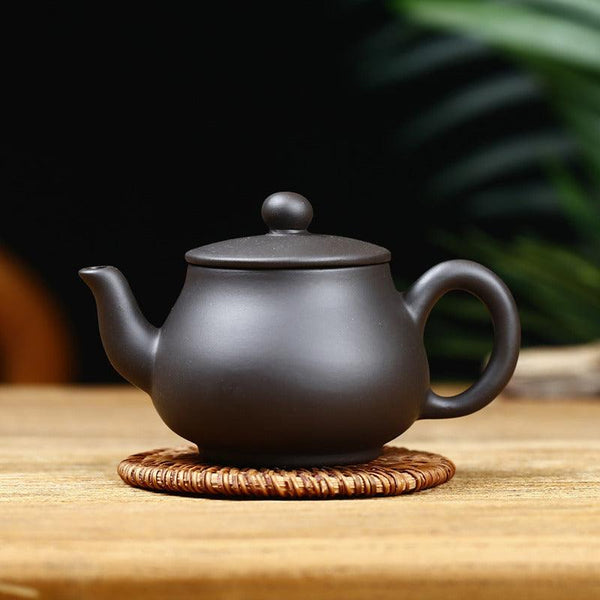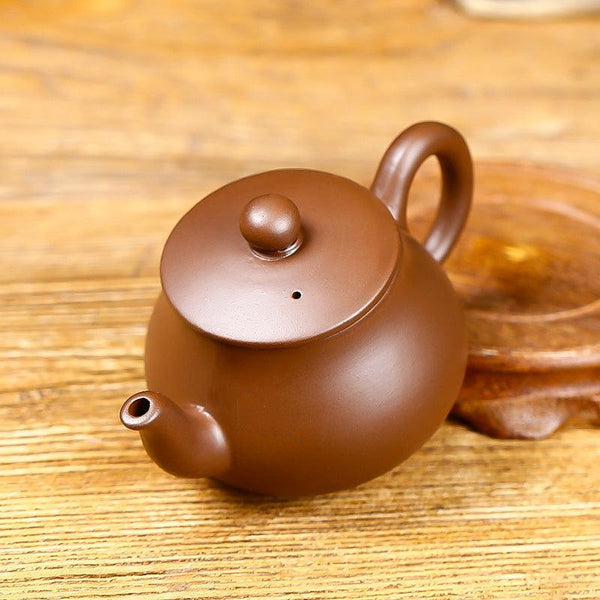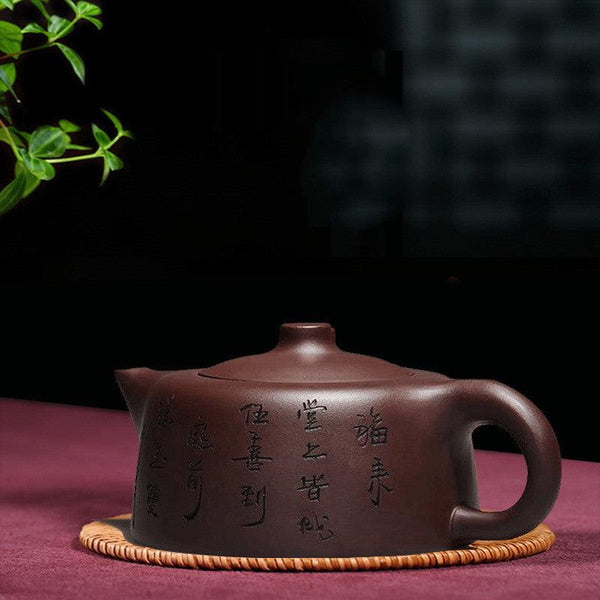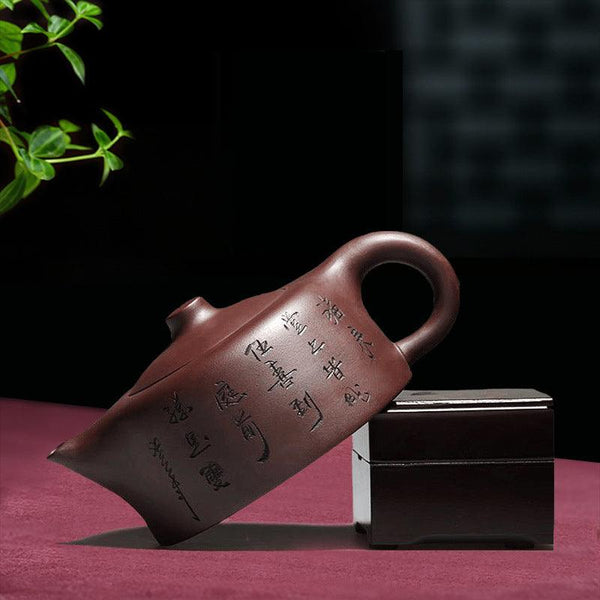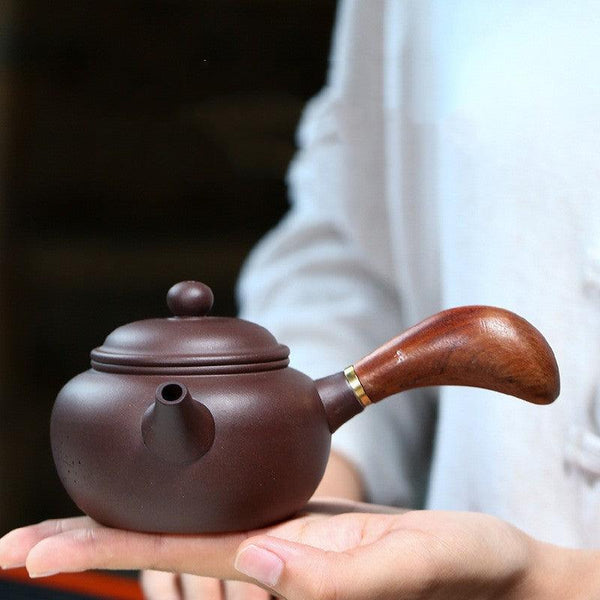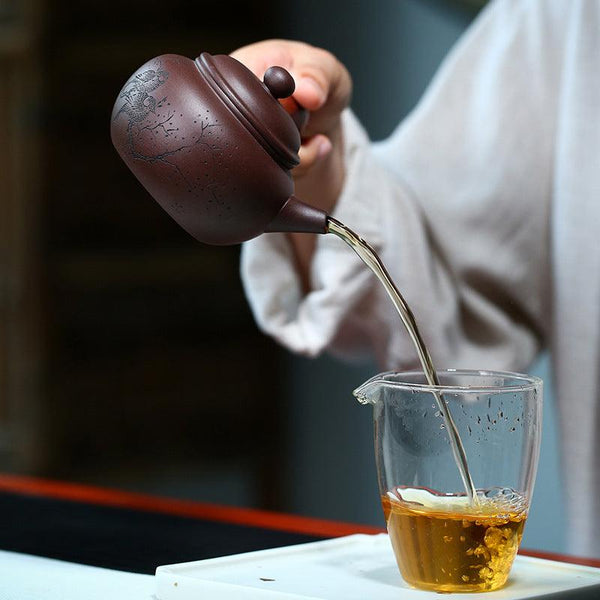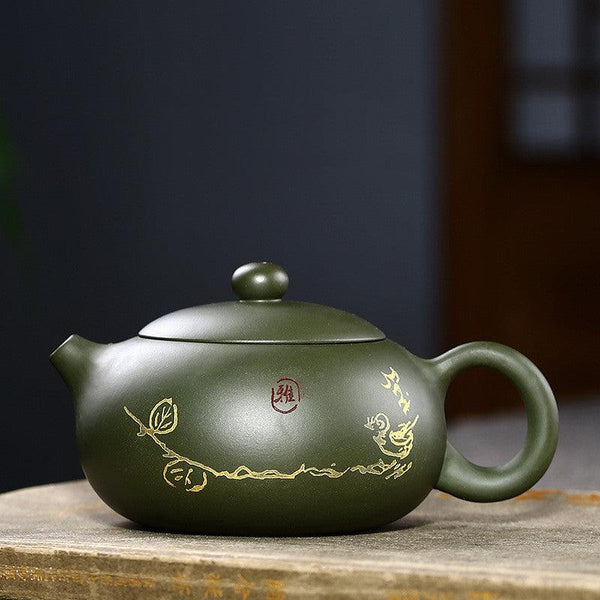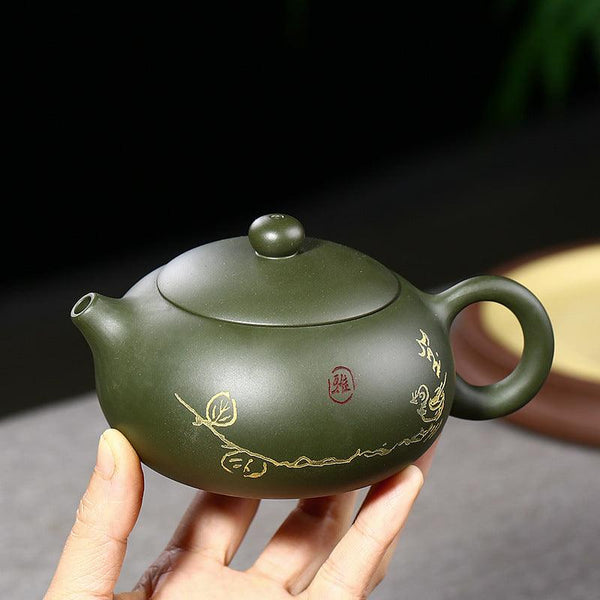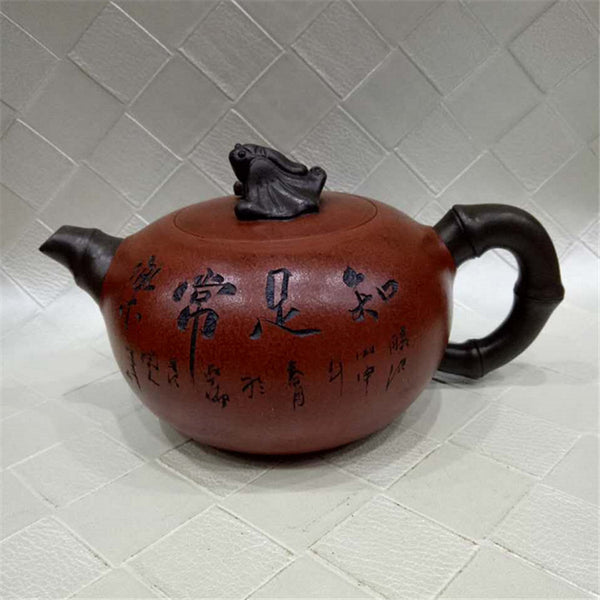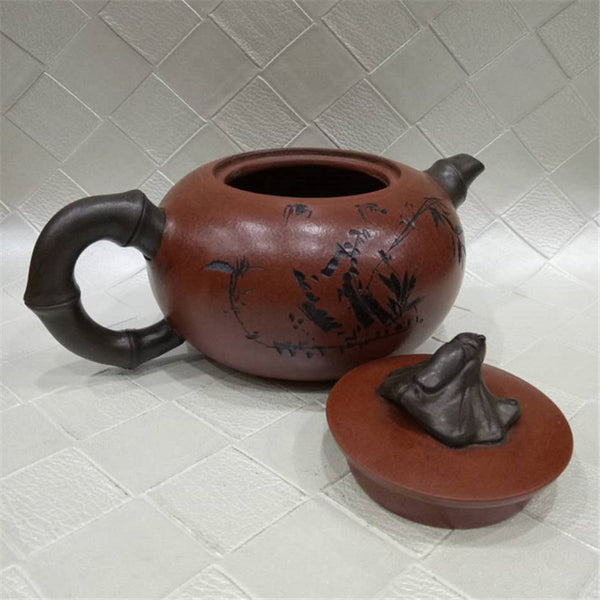Purple clay teapots are a distinctive handmade craft from China, particularly the Yixing variety. Yixing teapots do not interfere with the true aroma of the tea and do not retain any odors from cooked soup. They effectively preserve the tea's color, fragrance, and taste for an extended period. Purple clay tea sets are admired for their simple yet unique shapes and excellent craftsmanship. Over time, these pots develop a rich, ancient jade color after being steeped in tea and handled.
The core of a purple clay teapot lies in the characteristics of the clay and its precise physical structure design. The weight distribution of the teapot, including the center of gravity, wall thickness gradient, overall weight, and the ratio of handle to spout, is a key physical parameter that affects the water flow dynamics, heat transfer efficiency, and operator control accuracy during the brewing process. Understanding these mechanical and thermal relationships is the basis for scientifically improving the quality of tea soup.
Center of Gravity: Core of Mechanical Stability
The position of the Zisha Pot's center of gravity is the primary mechanical factor determining its stability when tipped over.
1. Low center of gravity design (such as Xishi pot, Shipiao pot)
Take the Xishi pot as an example. The pot body is oval, the density of the pot bottom is concentrated, and the center of gravity is close to the supporting surface. When tipping, the pot body is stable and not easy to shake. The water flows out of the spout smoothly and at a uniform speed, avoiding the flavor imbalance due to unstable water flow. It is suitable for brewing Pu'er cooked tea and old black tea.

2. High/offset center of gravity design
High-body well-rail pot is a common high center of gravity clay pot. This type of purple clay pot has high requirements for the craftsmanship of the technician and the wrist strength of the brewer. During the manufacturing process, if the design is inappropriate, it will cause the pot body to tilt forward or sideways. During the brewing process, the operator needs to apply additional reverse torque to maintain the stability of the water output and avoid destroying the uniformity of tea infiltration. If this is your first time buying a purple clay pot, buying a pot body with a low center of gravity, such as the Xishi pot, is recommended.

Note: When buying a purple clay teapot, you should consider whether the spout's position is parallel to or slightly lower than the pot's mouth. If the spout is too high, it will be difficult to pour out the water completely; otherwise, the water in the pot will overflow if it does not fill the pot's mouth.
Wall Thickness Gradient: An Invisible Regulator of Heat Transfer
The wall of a purple clay teapot is not homogeneous, and its thickness variation is the core means for teapot makers to control thermodynamics. The thick wall area has a larger heat capacity, which heats up slowly but has strong heat preservation; the thin wall area has a small heat capacity, which heats up quickly but dissipates heat quickly.
Research shows that under the same capacity and clay material, the thickness gradient of the teapot wall differs by 2-3mm, and the temperature drop rate of the center point of the teapot can differ by 5-8°C within 5 minutes after water is poured.
1. Thin belly and thick bottom/thick waist
The belly (main tea holding area) has a thin wall, which is conducive to the heat from water injection to quickly penetrate the core of the tea leaves and stimulate high-boiling point aroma substances (such as the roasted aroma of rock tea). The bottom or waist is slightly thicker, providing basic heat capacity to maintain the overall temperature and prevent scalding. This type of design (such as a thin-walled horizontal pot) is an ideal choice for brewing high-flavor oolong tea, achieving "fast heating and fast out".

2. Uniform thick wall
Strong overall heat preservation and gentle heat dissipation make it suitable for teas that require long-term gentle extraction, such as Pu'er old tea and Anhua black tea. The heat acts slowly and continuously on the tea leaves, promoting the precipitation of sweet substances such as tea polysaccharides and pectin, making the tea soup more mellow.
Note: When purchasing, pay attention to whether the key areas (the base of the spout and the knob) are thickened. This design prevents stress cracking caused by local overheating (especially for red clay pots) and improves the comfort of holding.
Overall Weight and Accessories Ratio: Scientific Considerations of Ergonomics
The weight of a purple clay teapot is usually between 100g and 300g (150- 300ml capacity), depending on the clay's density, the vessel's size, and the production process. The overall weight of the teapot and its distribution between the body, handle, and spout directly affect the accuracy and durability of the operation.
Counterweight design of the handle
The handle is the main force point, and its weight, shape, and position directly affect the balance of the pot body.
Straight handle (ear-shaped handle)
Straight handle is the most common design and suits most pot types (such as stone scoop, antique).
- Mechanical characteristics. The center of gravity is close to the wrist, the torque is short, and the operation is labor-saving.
- Optimization method. Some high-end pots use a hollow handle design to reduce the weight at the far end and make the center of gravity closer to the holding point.
Horizontal handle (side handle): such as Kyushu (Japanese style)
- Mechanical characteristics. The force arm is long and suitable for one-handed operation, but it is necessary to pay attention to whether the center of gravity of the pot body is offset.
- Beam handle. Such as a beam handle pot or a Qinquan pot.
- Mechanical characteristics. The pot body's center of gravity is high, so it needs to be operated with both hands, but it is stable and suitable for large-capacity brewing.
Influence of the weight of the spout
The weight of the spout will affect the balance when pouring.
1. Short straight flow
The pot body is lightweight, with a small forward tilting moment, and the water flows straight and fast, suitable for precise control.
2. Three-bend flow
Because of its complex shape and weight, the handle needs to be balanced; otherwise, it can easily cause the pot body to tilt forward.
3. Long spout flow
The weight is concentrated at the far end of the spout, and the handle weight needs to be strengthened; otherwise, it is easy to "nod" when pouring.
Requirements for Weight in Different Brewing Methods
| Brewing Method | Recommended Pot Weight | Design Requirement |
| Quick brewing and quick release (high-flavor tea) | Lightweight (100~180g) | Low center of gravity, light pot handle |
| Medium-speed brewing (balanced type) | Medium weight (180~250g) | Balanced spout, light pot knob |
| Slow brewing (old tea) | Weight (250 g+) | Thick wall, stable handle |
Conclusion
The weight design of a purple clay teapot is a precision engineering that integrates solid mechanics, fluid mechanics, heat transfer, and ergonomics.
The height of the center of gravity determines the mechanical stability, which is the basis for the smooth flow of water; the wall thickness gradient is an invisible valve for heat storage and transfer, which accurately controls the extraction temperature field; the ratio of the overall weight and accessories is directly related to the accuracy and sustainability of the operation.
A teapot with scientific weight distribution is a reliable bridge connecting the ingenuity of tea makers and the true nature of tea. It is the physical cornerstone for creating a cup of tea soup with excellent color, aroma, taste, and shape.


